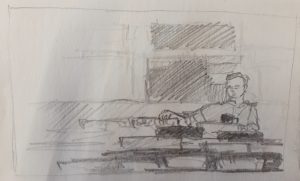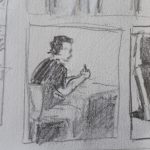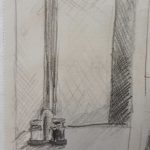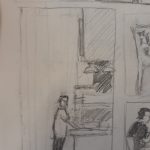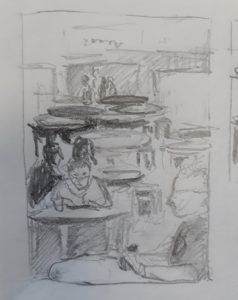In the afternoon following the figure drawing lesson, we headed to HASS to do some outdoor sketching and to understand the theories of perspective better. Prof demonstrated how he construct a sketch using one-point and two-point perspectives.
For one-point perspectives, there are two pairs of parallel lines, each pair established by joining the lines extended from the vanishing point; for two-point, there is one pair.

By determining the lines of building structures that are parallel, we can leverage on that foundation to draw the basic structures of the building.
Prof told us to always focus on the big picture first: draw out the general structure before filling in the details. Should we rush into the details and the details aren’t drawn accurately, this will subsequently affect all other structures.
Prof also mentioned that in the scenario where the perspective is particularly hard to construct (or if we are simply lazy or bad at perspective drawing), we can make use of space to cover up our weakness by placing smaller structures in front of bigger ones so that the edges of the buildings are obscured.
These are some sketches that I made that day:
I wasn’t overly rigid in my drawing in the sense that I was quite loose with plotting the construction lines. I merely got a general sense of the direction of the line and went ahead to draw it out. I guess judging by the conceptual (focus more on form) vs perceptual (focus more on what you see) distinction that Prof mentioned, I belong to the latter.
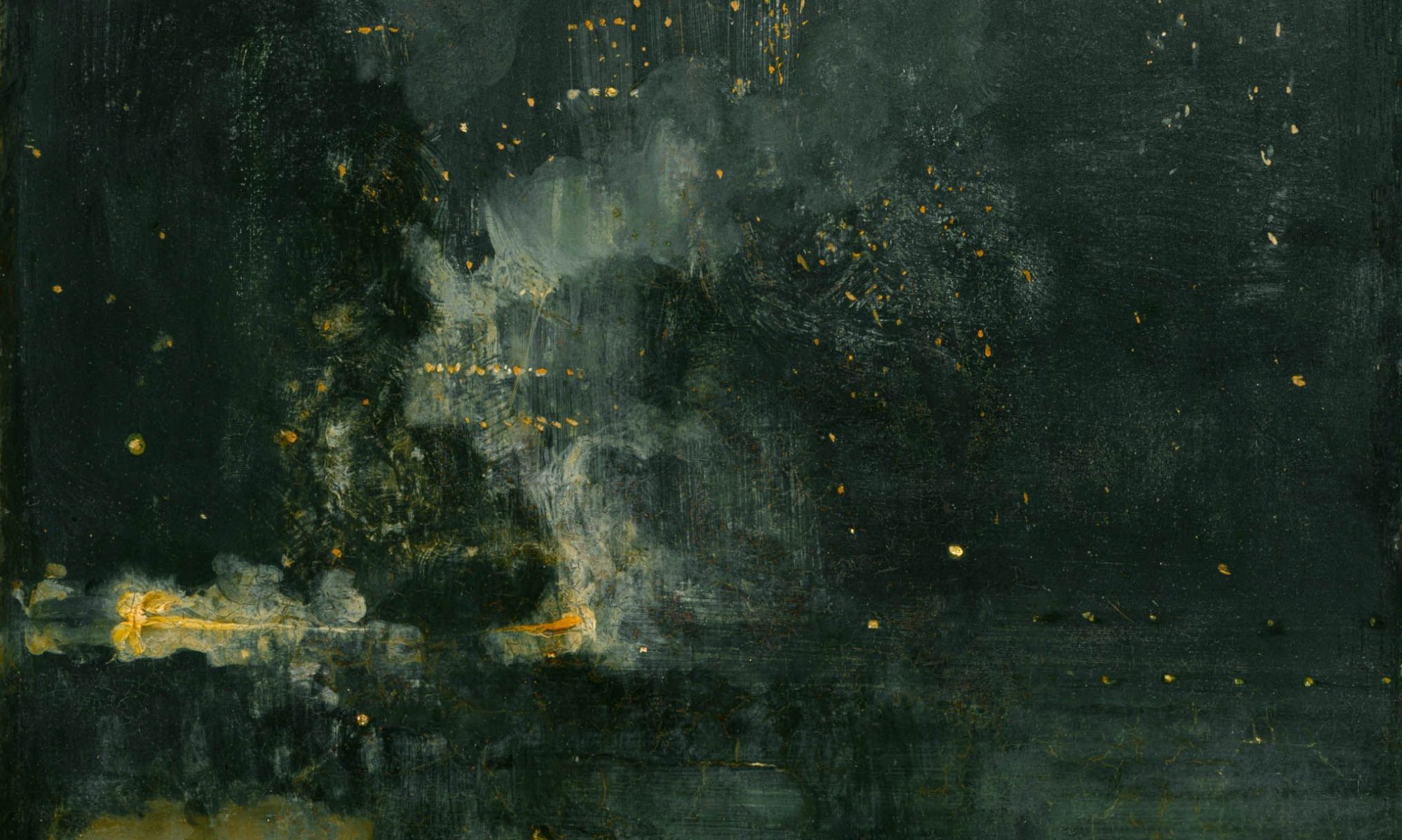
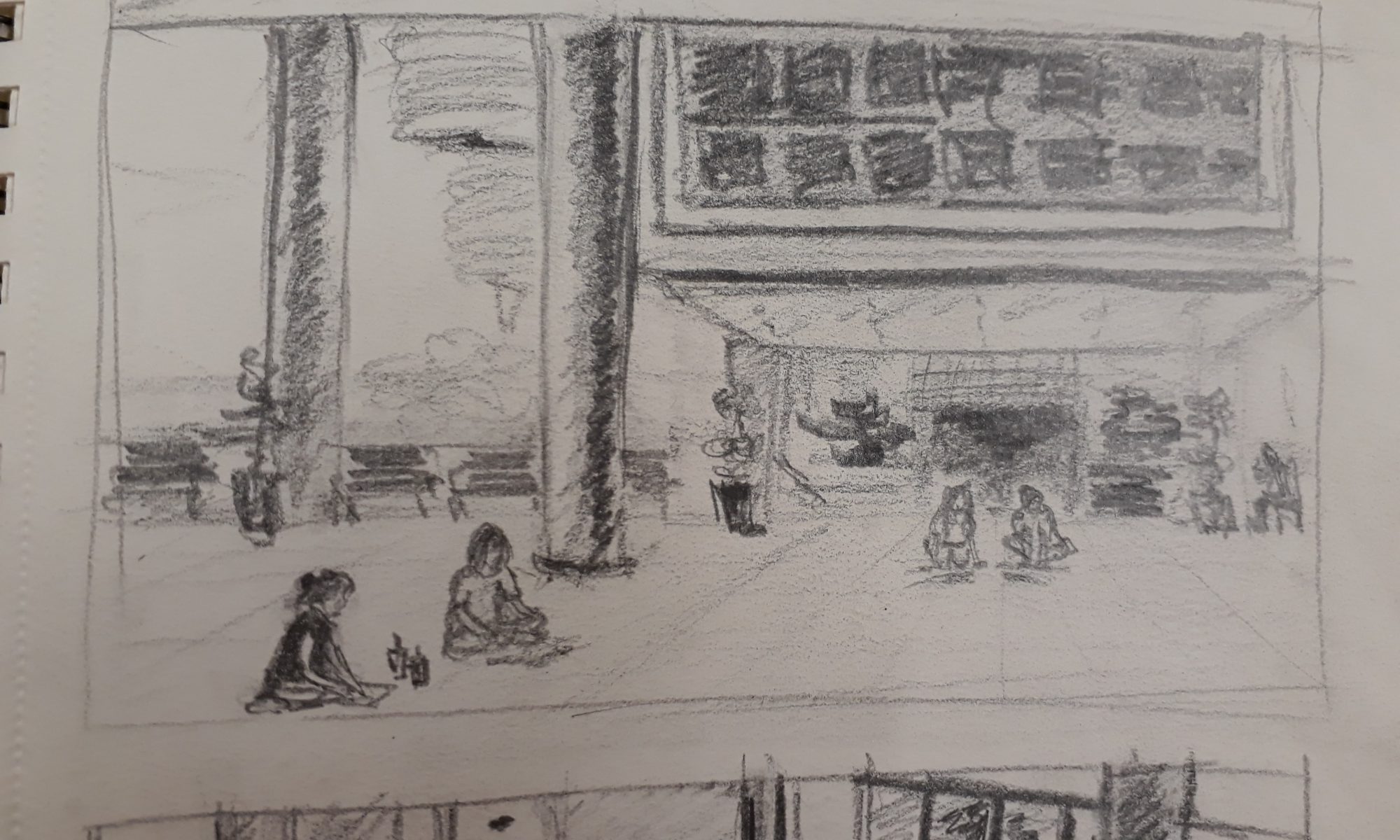
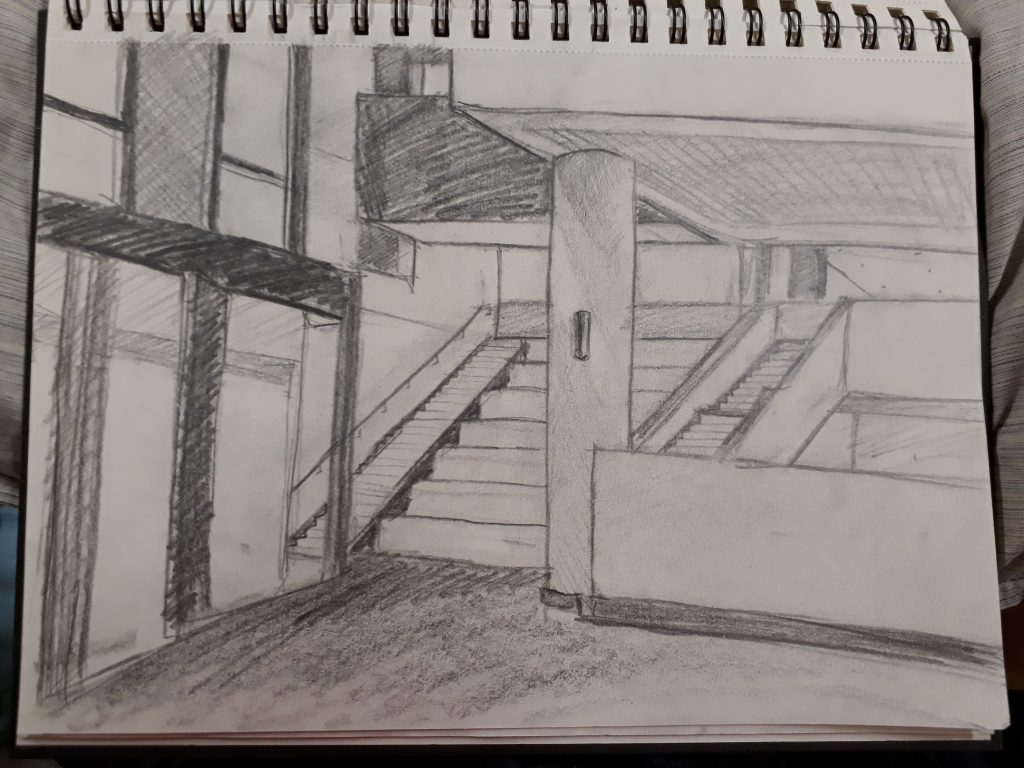
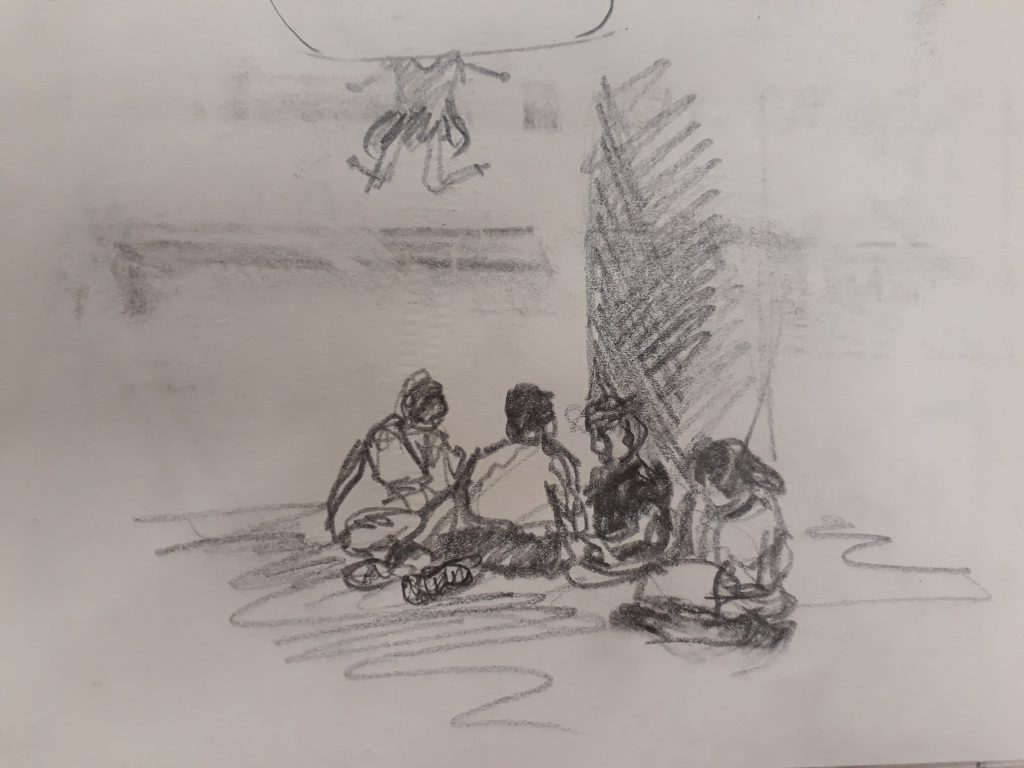
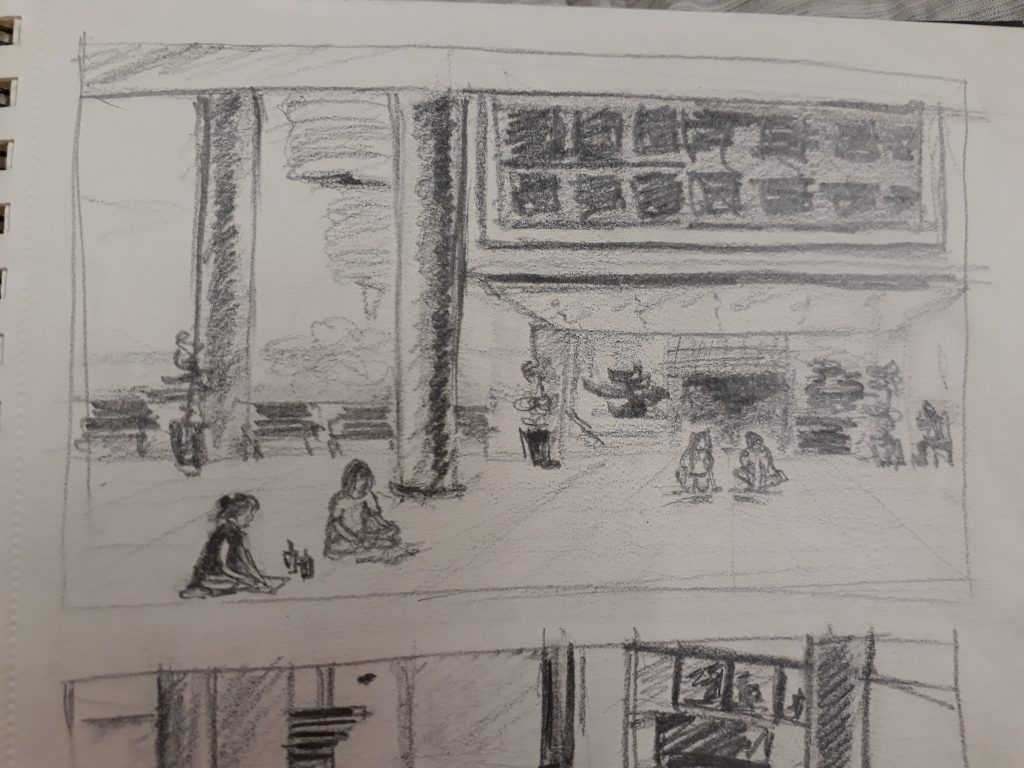
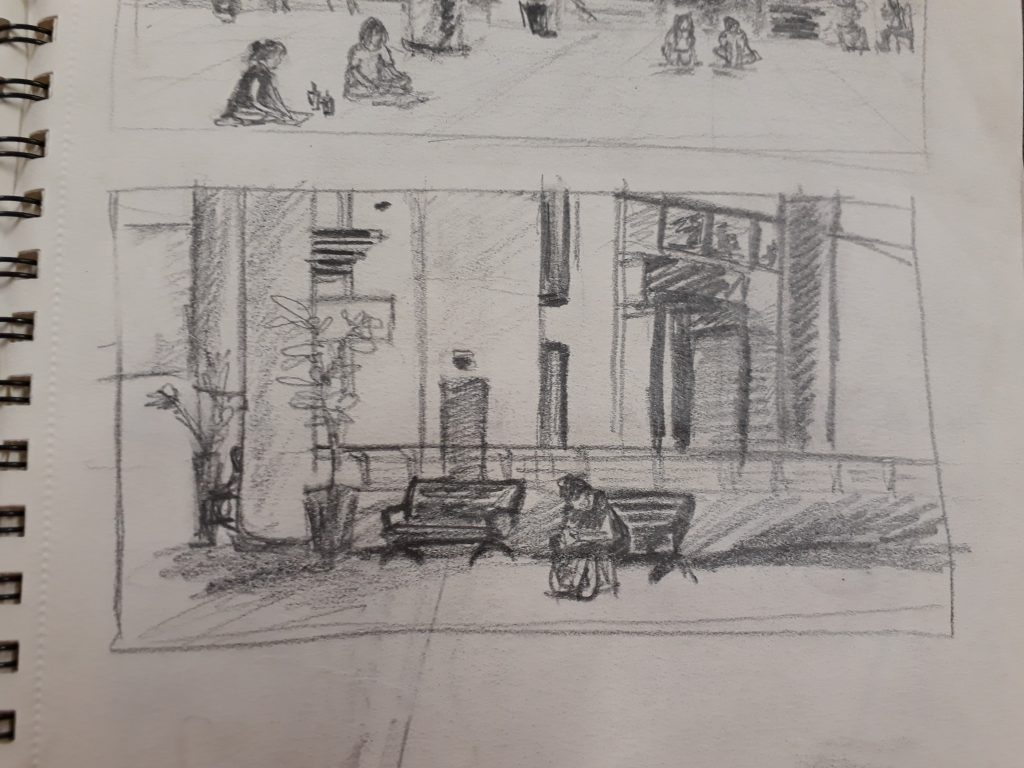
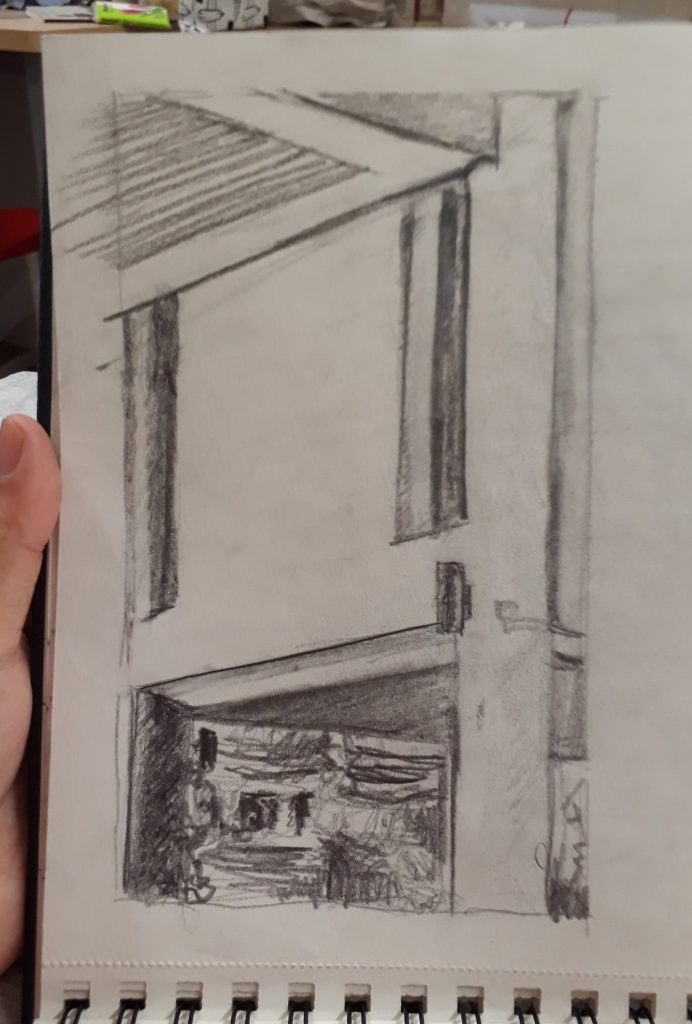
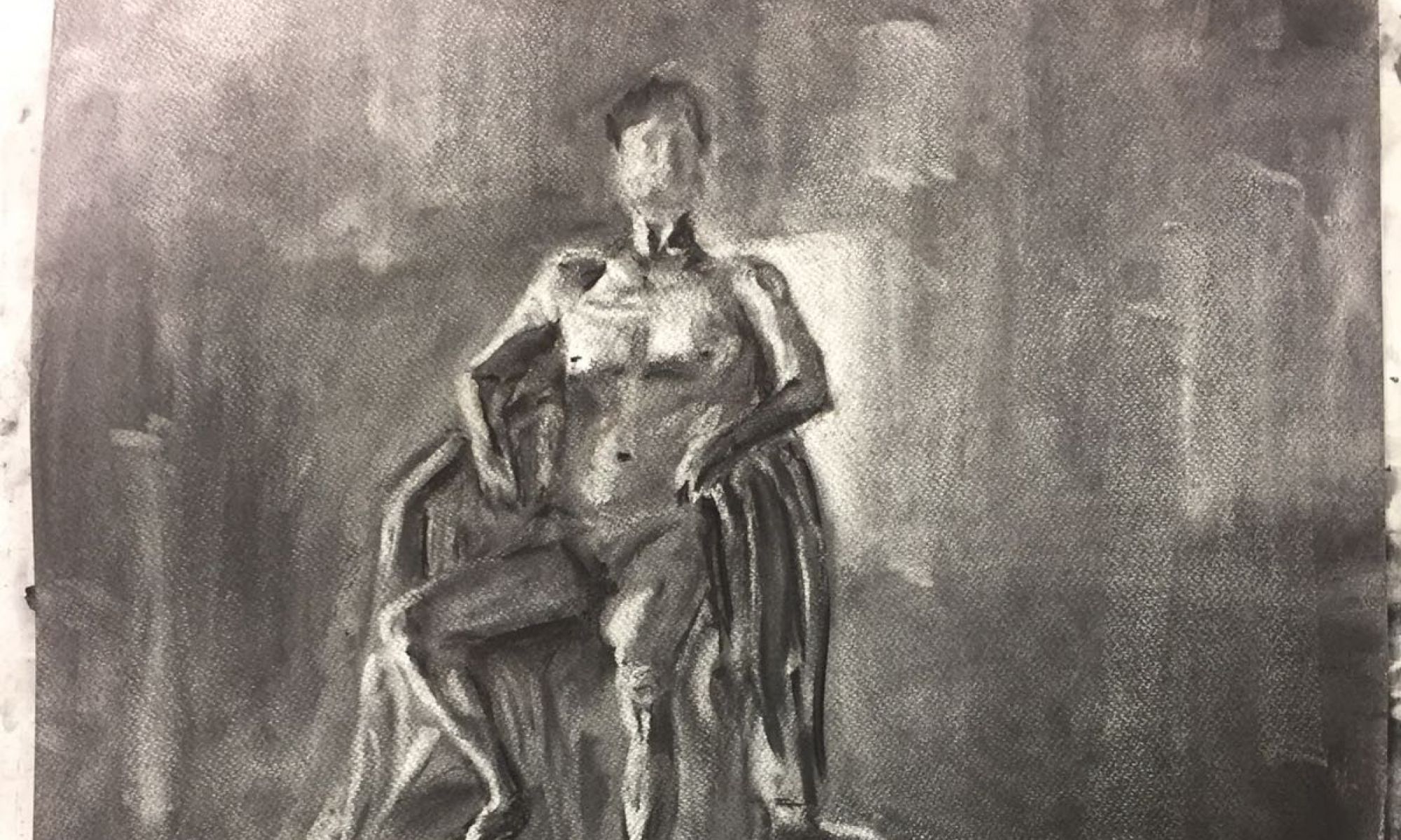
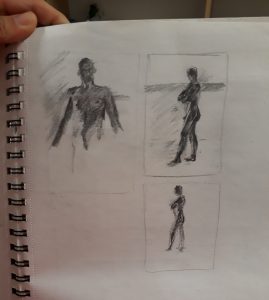
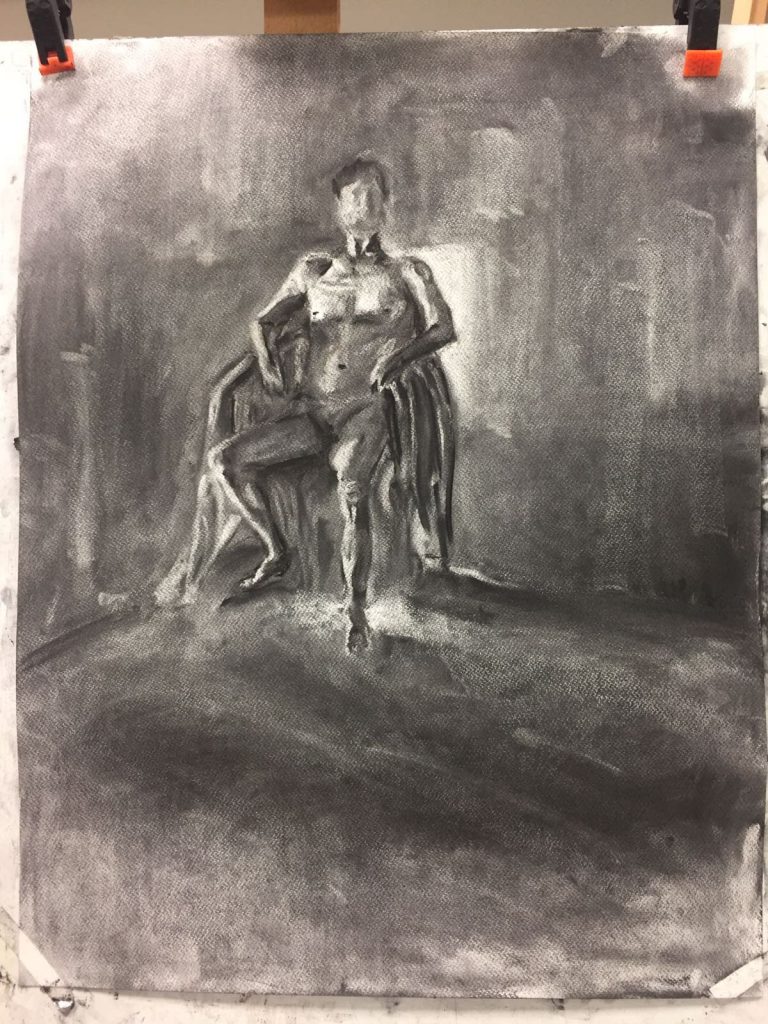 Here, we first smeared the background with charcoal so that it is mid-tone black and then brought out the human form by using an eraser. This exercise helps us to identify the brightest and darkest parts of the human figure, and this aids us in elucidating the form accurately.
Here, we first smeared the background with charcoal so that it is mid-tone black and then brought out the human form by using an eraser. This exercise helps us to identify the brightest and darkest parts of the human figure, and this aids us in elucidating the form accurately.